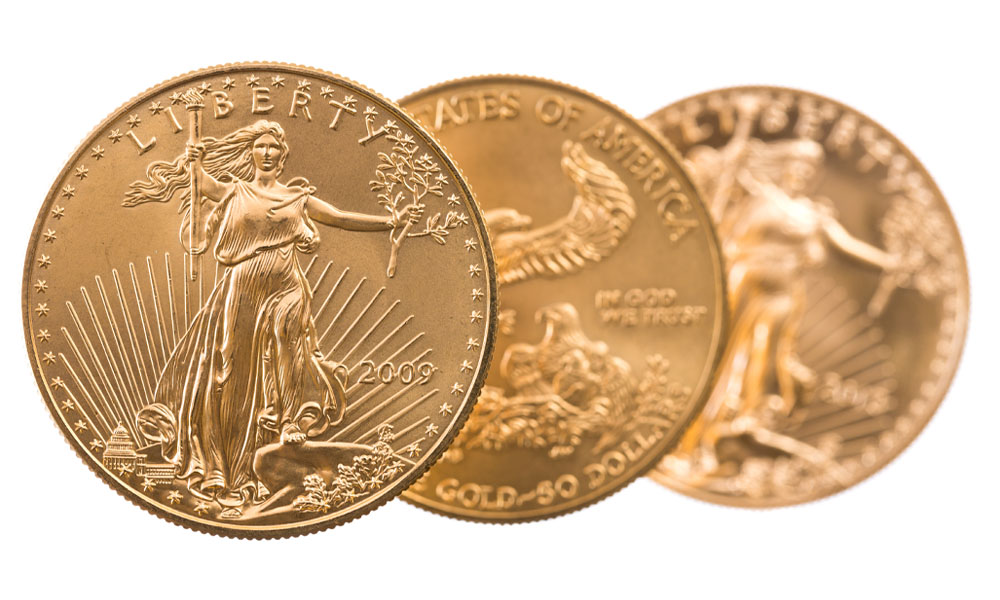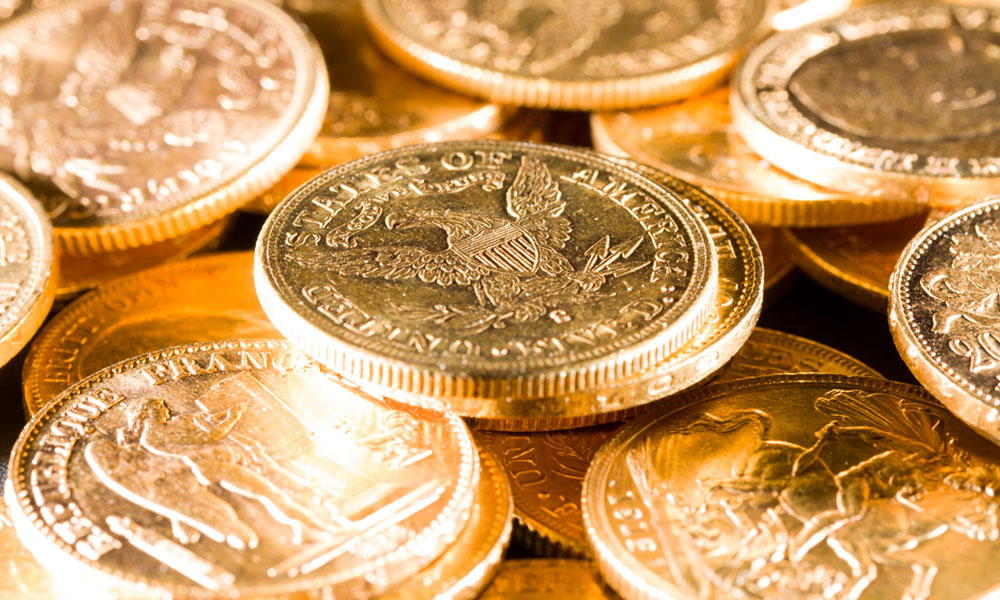Throughout American history, gold coins were used as a medium of exchange for payment of goods and services. And until 1933, they were a universally accepted form of money used to settle everyday economic transactions. Today, investors buy gold bullion coins primarily for wealth preservation and as a hedge against inflation. But can modern gold bullion coins, specifically those minted by the U.S. Mint like the American Gold Eagle or historic pre-1933 gold coins, still function as legitimate currency?
Legal Tender Status of U.S. Minted Gold Coins
Modern American Gold Eagle coins, minted annually since 1986, are legal tender backed by the U.S. government, each bearing a distinct face value ranging from $5 (1/10 oz) and $10 (1/4 oz), to $25 (1/2 oz) and $50 (1 oz). However, spending these coins at face value would be financially unwise, as their intrinsic gold value significantly exceeds their nominal denomination. Therefore, converting these bullion coins back into fiat currency before spending is the only sensible approach.

Pre-1933 Gold Coins: Historic Currency
Before 1933, gold coins regularly circulated as everyday currency. Coins like the Saint-Gaudens Double Eagle ($20 face value), Liberty Head Eagle ($10 face value), and even smaller denominations like the Quarter Eagle ($2.50 face value) were routinely exchanged for goods and services. When President Franklin Roosevelt outlawed private ownership of gold coins in 1933, their use as common currency effectively ended, transforming these coins into collectibles and historical investments.

Can You Spend Gold Coins Today?
Technically, yes. Modern American Gold Eagles and American Gold Buffalos, along with historic pre-1933 coins, are still recognized as legal tender by the U.S. government. However, practically speaking, their use in everyday transactions is limited by their market value, which vastly exceeds their stated denomination. For example, a 1 oz American Gold Eagle coin has a face value of $50 but holds a market value exceeding several thousand dollars based on current gold spot prices.
However, across the country momentum is building to restore gold's rightful place as money used in commerce. Over a dozen U.S. states have already passed legal tender legislation effectively removing capital gains tax at the state level and reaffirming gold as a medium of exchange. This movement, driven by concerns over inflation and monetary stability, seeks to reintroduce gold as an investment asset and as a recognized medium of exchange for goods and services. These emerging legal shifts signal a broader recognition of gold's enduring role as real money, especially during periods of economic uncertainty or potential hyperinflation.

Tax Implications and Practical Considerations
If you choose to use gold coins for transactions based on their bullion value, it's important to understand the tax implications. Exchanging gold coins at their bullion market value rather than face value can trigger capital gains taxes, as the IRS treats gold as a collectible rather than currency when transacted above its legal face value.

Conclusion: Currency, Yes—But Practicality Varies
While gold coins minted by the U.S. Mint are legal currency, their practicality as everyday currency is limited due to the gold bullion's higher intrinsic value compared to the coin's much lower nominal face value. Whether you consider modern American Gold Eagles or pre-1933 gold coins, their primary use today remains as a store of value and investment rather than practical currency for routine purchases.
However, knowing their dual status as legal tender and valuable bullion adds a reassuring layer of security, ensuring these golden coins remain more than mere collectibles—they are a lasting symbol of wealth protection and monetary history.
